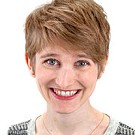Published March 8, 2012 at 10:26 a.m.
On Town Meeting Day, residents of Lowell and Eden resoundingly rejected a proposal to back a Superfund designation for the Vermont Asbestos Group mine that straddles the border of the two towns at Belvidere Mountain.
When I spoke with Lowell selectman Alden Warner a few weeks ago about this proposition, he told me that if he were a betting man, he'd wager the proposals would fail. By this weekend, when Candace Page reported on the stalemate for the Burlington Free Press, there wasn't much sense in wagering. By then, the outcome seemed certain. As the Free Press reported:
“They are going to shoot it down like a bullet,” is how Eden landowner Leonard Prive of Burlington put it last week.
Warner ... is “100 percent convinced” the proposal will fail.
If rhetoric at recent meetings and in email exchanges is any indication, some residents of the two communities are ready to ride the state and the U.S. Environmental Protection Agency out of town on a rail, metaphorically speaking, tar and feathers optional.
And so they did. Only three residents in Eden supported the listing — a drop in the bucket compared to the 106 against. In Lowell, the tally was 103 against and 38 in favor.
The Superfund listing would have brought in big federal bucks by way of the EPA to clean up the abandoned mine. But residents of both towns were reluctant to embrace government intervention after a botched Department of Health study in 2008 erroneously labeled the region as experiencing a higher than average risk of asbestos-related diseases. (Eden resident Leslie White debunked that study by driving town to town and studying the death certificates for herself.)
Many wanted answers to questions about just what a Superfund listing would mean for the town. How much space would the site encompass? What techniques might the EPA use in its cleanup? But residents were in a bind: The EPA couldn't give any firm answers until the site made it onto the Superfund list. And the towns had no intention of moving forward with the listing without answers.
Others felt strongly that the Superfund listing just wasn't the best tool for the job. That's in line with the opinion held by John Freitag, a Strafford resident who has watched Superfund proceedings in his own town at the defunct Elizabeth Mine. A self-avowed long-time environmentalist, Freitag says the Superfund program was initially set up to deal with the nation's most toxic and hazardous waste sites, like the infamous Love Canal.
"It wasn't written for cleaning up abandoned mine sites in Vermont with very little or no threat to human health," Freitag says.
Freitag also wonders if there isn't a better approach to cleaning up these sites. He's watched the EPA bring in thousands of truckloads of material to mediate the Elizabeth Mine site — an approach he calls old-fashioned compared with more inventive techniques of remediating the mine site.
"We can do something better here," Freitag says. "Is there a way of working with nature? Over a period of time, what remediation has naturally taken place, and what can we do to encourage that?"
John Schmeltzer, an environmental analyst with the Vermont Department of Environmental Conservation (DEC), says the state agency will continue its work at the Belvidere Mountain asbestos mine. That includes overseeing and maintaining the drainage and erosion control features in place at the 1540-acre site, as well as monitoring stream health and some experimental vegetative plots. Schmeltzer wrote in an email to Seven Days that the outcome of the vote wasn't surprising, and that he feels it was important for the towns to have their say on the issue regardless of the outcome of the votes.
"With regard to next steps, we will begin the process of developing a strategy, including possible funding sources, to address the long-term erosion issues at the site," Schmeltzer wrote. "However, without tapping into Superfund resources, we will have fewer tools."
Photo by Andy Bromage.
One or more images has been removed from this article. For further information, contact
[email protected].
More By This Author
Speaking of Blurt
-
Blurt Is No More. Here's Where to Find New Seven Days Content
Sep 17, 2012 -
Alice Eats: The Mill Market & Deli
Sep 11, 2012 -
Grazing at King Arthur Flour's Airy New Digs
Sep 10, 2012 -
Movies You Missed 55: Making Plans for Léna
Sep 7, 2012 -
Quiz: Ben & Jerry's Flavor or Porn Flick?
Sep 6, 2012 - More »
Comments
Showing 1-1 of 1
Comments are closed.
From 2014-2020, Seven Days allowed readers to comment on all stories posted on our website. While we've appreciated the suggestions and insights, right now Seven Days is prioritizing our core mission — producing high-quality, responsible local journalism — over moderating online debates between readers.
To criticize, correct or praise our reporting, please send us a letter to the editor or send us a tip. We’ll check it out and report the results.
Online comments may return when we have better tech tools for managing them. Thanks for reading.














































